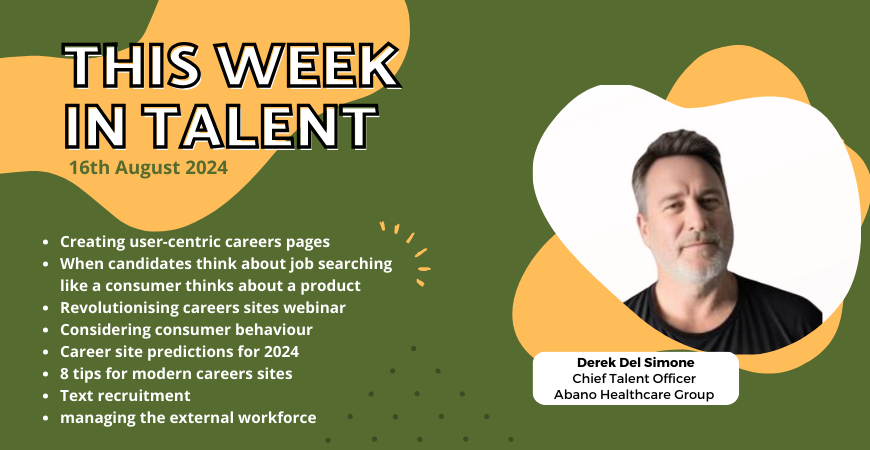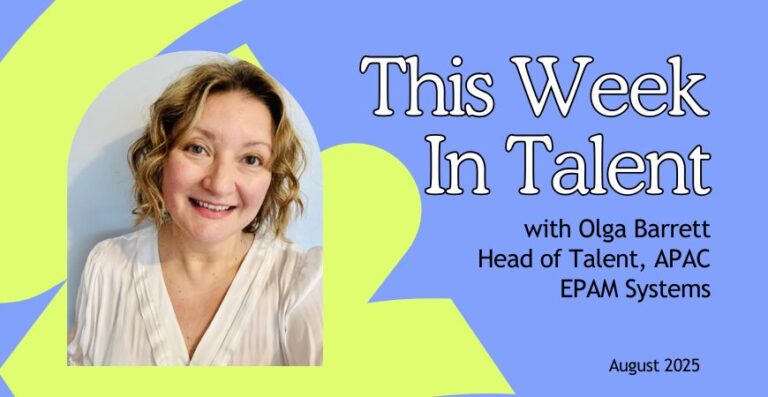My journey in Talent Acquisition has mostly been within organisations with a predominately 100% employee-based workforce. Transitioning to the dentistry sector, I’ve entered a 50/50 split between employees and contractors. It’s been a big shift in thinking for me.
This transformation journey is not just about thinking about employees but engaging with Clinicians who are commercial service providers. This shift has brought unique challenges in thinking about talent attraction, onboarding, and retention. Despite the differences, I chose not to split the transformation strategy but instead adapted and reimagined elements to meet the distinct needs of our talent ecosystem.
With the upcoming September launch of our revamped Abano Healthcare career site, this week we have been testing our AI career advisor, Dr. Wisdom Tooth, and fine-tuning the content on pages.
I’m excited about moving from a generic careers site to a modern, user-centric platform that personalises content for each visitor, whether written, video or as a podcast. This week, as we review everything we have been trying to answer that big question: Does this new site address the needs of every visitor?
When I started this transformation project, I read an article about how candidates think about their job search, exactly like consumers do about products. That stuck with me, and it has been the key focus as we have reimagined the talent process and candidate experience. This is what drove us to look at our careers page as part of this transformation journey.
I’m feeling excited about the new site and looking forward to going live in 4 weeks. Career sites have often been an afterthought for me, with their management delegated to marketing despite my vested interest. A rookie mistake!
What I have learned over the last 9 months is that the most successful career pages result from a strong collaboration between recruitment marketing and talent teams, combining their expertise to create a powerful tool for attracting and engaging potential candidates.
I’d never considered career sites and the wealth of rich data they can provide for Talent Acquisition until I saw them as consumer pages. Our new site will provide valuable data and analytics on visitor behaviour and application trends, allowing us to leverage these insights to refine strategies, enhance job postings, and improve marketing efforts, ensuring alignment with organisational goals and optimising recruitment outcomes.
Here’s what caught my attention this week:
Upcoming webinar: Revolutionising Career sites
ATC’s upcoming webinar has real-life examples from companies who have utilised AI in their career sites, including McDonald’s, FedEx and T-Mobile. Join on 29 August at 11am AEST to learn more about how conversational AI can improve candidate experience.
What to do when the customer becomes the candidate
When customers become candidates, Coles recognises the need to maintain the same level of respect and service in the recruitment process as in customer interactions. Viewing candidates as customers ensures that the experience remains positive, reflecting the company’s values and potentially influencing their shopping decisions
The psychology of consumer behaviour
Consumer behaviour, or how people buy and use goods and services, is a rich field of psychological research vital for companies aiming to sell products to a wide audience.
Careers Site Predictions 2024
As we move into 2024, AI will drive innovations in content creation, candidate engagement, and personalised job matching. Career sites are set to evolve into dynamic platforms offering ultra-personalised experiences, AI-driven content, and advanced analytics.
8 tips for a modern careers site in 2024
In 2024, modern career sites should meet these 8 essential tips: create a dedicated site, define target personas, enable WhatsApp applications, streamline the process, offer comprehensive content, use smart animations, connect to an ATS, and integrate a broader recruitment campaign.
Why Text Recruitment is the Future of Engaging Candidates
Throughout the day, people often see incoming texts within seconds or minutes, while it can take a few hours to check personal email. Leveraging this behavior, recruiters use text recruitment for its direct and personalised approach, leading to higher engagement and faster response times compared to traditional channels.
Managing the external workforce
The modern workforce increasingly relies on a blend of internal employees and external contributors, such as contractors, gig workers, and crowdsourced participants. This framework from Deloitte emphasises the need for “orchestration” to align efforts to manage workforce ecosystems effectively.







